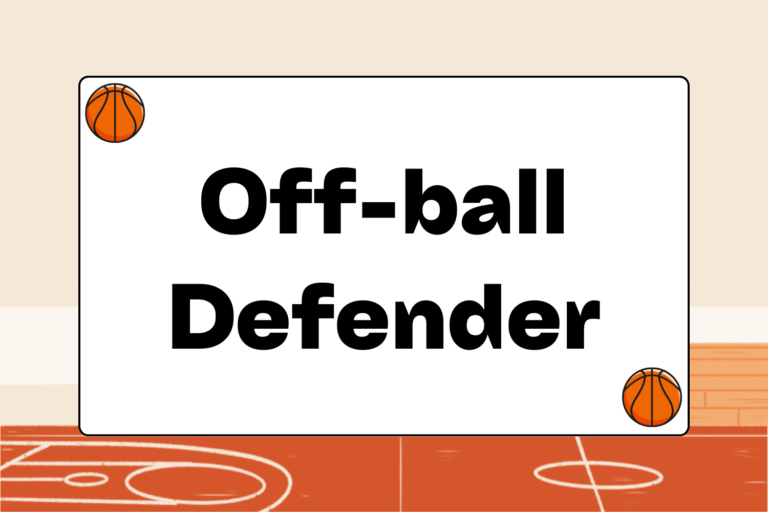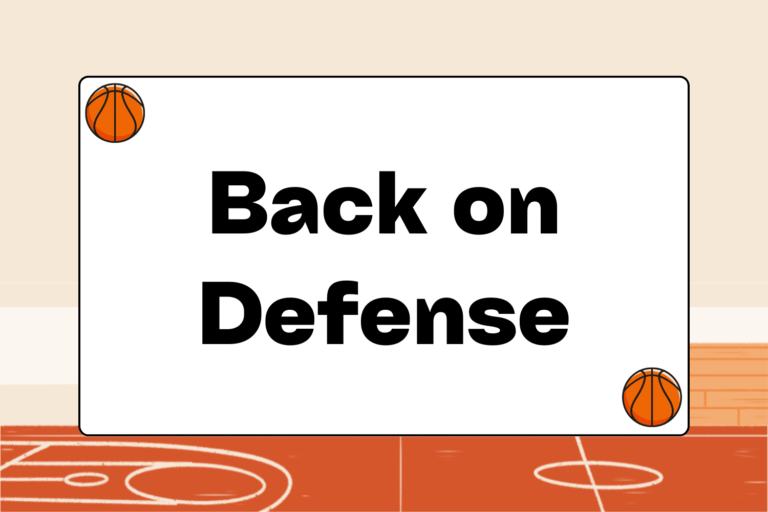Full-court pressure defenses are used to create turnovers and increase the tempo of a game. Contrary to popular belief, it doesn’t have to be a gambling, all-or-nothing defensive style; instead, think of “full-court pressure” as describing the aggressive defense that many teams like to use normally, but extended throughout the length of the floor. Learn more about running a Full-court press here.
Full-court Press Benefits
There are many reasons that teams will incorporate a full-court press into their defensive arsenal, including the need to:
- Speed up the game tempo
- Compete against tougher competition
- Come from behind late in games
- Increase defensive intensity
- Wear out the opposition
- Take advantage of inexperienced guards
Most teams should practice full-court pressure—both to have it as a weapon and to be prepared when opponents spring it on them.
Mental Edge
Advanced teams can occasionally use a zone strategy to create traps and confuse ball-handlers, while intermediate teams can stick with man-to-man coverage, which is just as effective and very easy to learn.
Match Up
In a man-to-man full-court press, each player will match up with his defensive assignment after a made basket. However, there’s no time for each player to seek out his man following a steal, turnover, or defensive rebound, so it’s important for each player to guard the nearest man.
Defenders can switch back to their original man if there’s time after the ball has reached the half-court. The idea is to immediately attack the ball, and close out on each offensive player. Defenders must quickly apply pressure, using quick footwork and active hands.
Force the Ball Toward the Sideline
The key player in the full-court pressure is always the on-ball defender, who should contest the dribbler every step of the way without committing a foul. The on-ball defender has two goals:
- Steer the ball toward the sideline.
- Force an errant pass or turnover.
Aggressively pressuring the inbounder is the first step to forcing the ball toward the sideline. Once the ball is passed, the on-ball defender should shade the dribbler toward the sideline by overplaying the center of the floor.
Denial
As with traditional man-to-man defense, each defender must take into account the location of both his man and the ball at all times:
- Defenders who are one pass away from the ball or on the same side of the court as the ball should focus on denying passing lanes.
- If covering a player who is two passes away from the ball, defenders should shade toward the basket to prevent long passes and easy lay-ups.
Neither scenario should mean easily conceding a cross-court or skip pass, though two-pass-away defenders can roam a little more and look for steals without getting beat downcourt.
Switching
Many teams use screens against a pressure defense to free up players, meaning that defenders will have to execute a switch. Switches must be called out clearly, and anticipated (when possible) by the dribbler’s defender. Mismatches are much less important than applying pressure and using quick feet to defend and deny.
Teams running a zone full-court press will not have to worry about switching on screens. However, they must be able to rotate among offensive players and ensure they are not guarding the same area of the floor as a teammate.
Trapping
Trapping is a great way to create a turnover in a pressure defense. In a man-to-man defense, defenders should be aware of trapping zones on the floor:
- The area along either sideline.
- The area just across the timeline in each corner.
- The front corners of the floor in the offensive zone.
A ball-handler bringing the ball upcourt along the sideline is vulnerable to a second defender sprinting over to set a trap. Traps should be quick and aggressive, and trapping players must constantly move their hands to prevent a pass from the trapped player. When performed correctly, the trap is a great way to draw a turnover or five-second violation.
Hot Tip: Stay Alert
Defenders in the full-court press want to avoid getting beat by V-cuts and open sprints to the basket. If the ball gets by a defender, everyone on the floor must sprint back to try and prevent an easy basket.
Evening the Field
Full-court pressure is constant and tireless and must be executed as such. Experienced, skilled guards can easily expose a full-court press that’s not run with 100 percent effort.
The real value of running a full-court press is the ability to wear out an opponent, who will eventually make mental mistakes after having every dribble contested for a full game. Defending the entire floor – instead of just the third of it closest to the basket – can be the great equalizer in a tough match-up against a stronger opponent.





